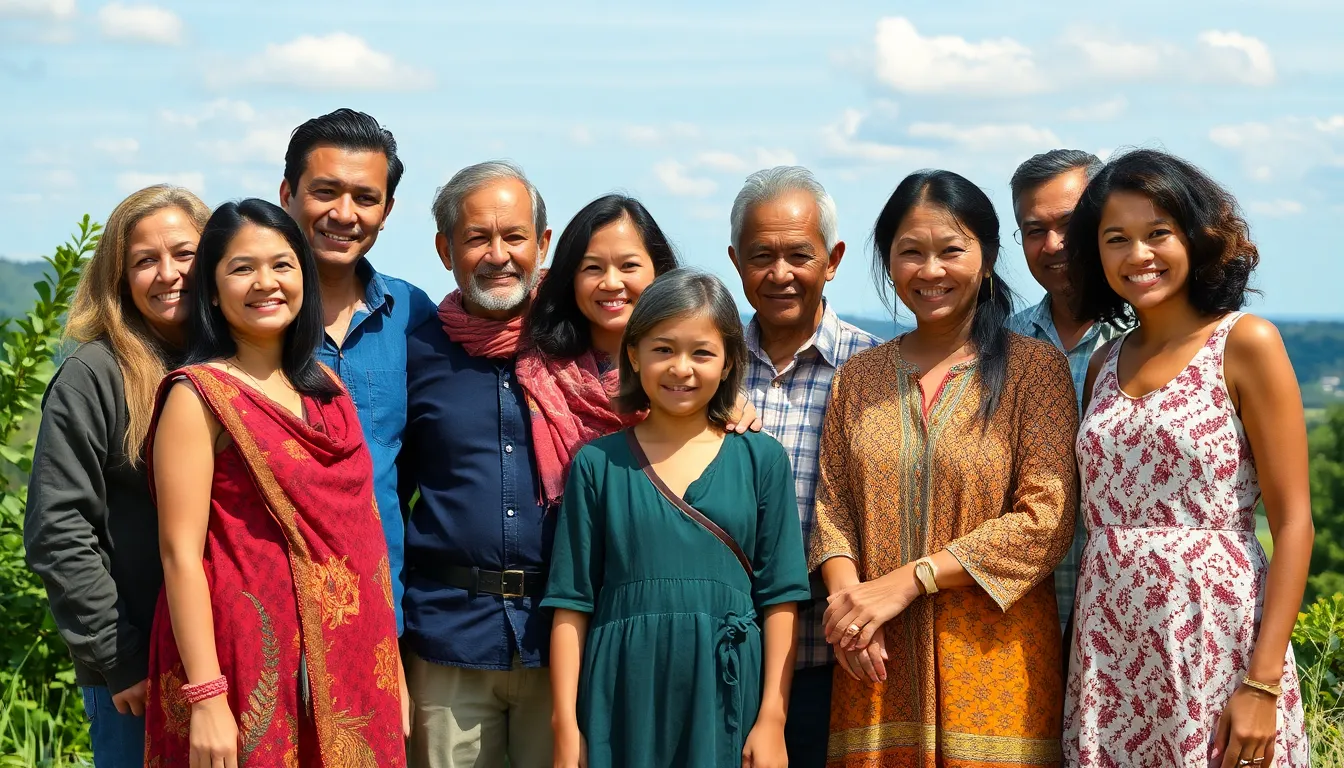Incestrahul might sound like a character straight out of a quirky sci-fi movie, but it’s actually a fascinating topic that’s capturing attention in the world of genetics and ancestry. Imagine discovering that your family tree has more twists and turns than a soap opera plot. This intriguing concept dives into the complexities of lineage, revealing how interconnected we all really are.
Table of Contents
ToggleOverview of Incestrahul
Incestrahul delves into the intricate realms of genetics and ancestry. This exploration reveals how family connections shape identities and highlight unexpected lineage complexities.
Definition and Classification
Incestrahul refers to the interrelation of genetic materials among various individuals within a familial line. This concept classifies genetic traits and inheritance patterns through specific genealogical connections. Researchers categorize these connections into several levels, such as direct lineage and collateral lines. Direct lineage encompasses immediate descendants, while collateral lines include relatives such as cousins, aunts, and uncles. The classification aids in tracing genetic predispositions and understanding hereditary conditions.
Habitat and Distribution
Incestrahul does not have a specific habitat since it relates to genealogical connections, reflecting diverse ancestry across regions. Genealogical research occurs in various environments, including urban and rural areas, giving insight into different cultural backgrounds. Individuals can conduct research using resources like historical records, DNA analysis, and modern genealogical databases. Each region contributes distinct genetic markers influenced by historical migrations and population intermingling. This distribution underscores the complexity of ancestry, showing how interconnected family histories span borders and cultures.
Features of Incestrahul

Incestrahul contains distinct features that emphasize the complexity of genetic ties among individuals. Understanding these characteristics enhances comprehension of family lineage and inherited traits.
Physical Characteristics
Individuals linked through Incestrahul often share notable physical traits. Eye color, hair type, and skin tone frequently reflect shared ancestry. Regions contribute unique genetic markers, leading to identifiable features passed down generations. This connection facilitates recognition of familial resemblance among individuals. Height and body composition may vary yet often maintain consistency within family lines. Genetic predispositions towards certain health conditions can also manifest, providing insight into familial health patterns.
Behavioral Traits
Behavioral traits influenced by Incestrahul exhibit fascinating patterns. Family members typically display similar interests, temperaments, or social behaviors. A propensity for specific hobbies or skills often stems from shared genetic backgrounds. Cultural practices and traditions frequently shape these behaviors, introducing additional layers of complexity. Social dynamics observed within families can also reflect inherited traits, establishing a unique family identity. Environmental factors, alongside genetics, play crucial roles in shaping behavioral characteristics, revealing intricate interrelations of ancestry and influence.
Significance in Ecosystems
Incestrahul plays a crucial role in shaping ecosystems, influencing interactions and sustainability within them.
Role in Food Chains
Incestrahul contributes to food chains by establishing genetic connections among species. It fosters predator-prey relationships, where genetic similarities help shape adaptive behaviors. Animals share genetic traits, enhancing their survival skills, which impacts their roles in the ecosystem. Various species exhibit preferences for specific prey based on these inherited traits, facilitating a balanced population. This connection also promotes resilience, allowing ecosystems to adapt to environmental changes while maintaining stability.
Impact on Biodiversity
Biodiversity reflects the diverse genetic traits passed through Incestrahul. Genetic variation among organisms fosters adaptability, enabling populations to thrive in changing environments. A rich genetic pool underpins ecosystem health, encouraging interspecies relationships that contribute to biological resilience. Different species exhibit unique adaptations driven by their genetic heritage, influencing habitat use and resource utilization. This interconnectedness enriches ecosystems, emphasizing the importance of preserving biodiversity to ensure long-term ecological balance.
Conservation Status
The conservation status of Incestrahul reflects ongoing challenges and efforts aimed at preserving its unique genetic diversity. Maintaining healthy populations is crucial for fostering sustainable ecosystems.
Threats to Incestrahul Populations
Habitat loss poses a significant risk to Incestrahul populations, driven by urbanization and agricultural expansion. Pollution negatively impacts genetic integrity, leading to reduced diversity among individuals. Additionally, climate change alters natural habitats, disrupting established family connections and breeding patterns. Invasive species threaten the survival of native lineages by competing for resources, further complicating genetic interrelations. Overhunting also contributes to population decline, removing key individuals that maintain genetic diversity. Each of these factors underscores the urgent need to address threats to Incestrahul.
Conservation Efforts
Efforts to conserve Incestrahul focus on habitat restoration and species protection initiatives. Collaborative projects among conservation organizations aim to improve genetic monitoring through advanced techniques like DNA analysis. Educational programs raise awareness about the importance of preserving genetic diversity in ecosystems. Community engagement fosters sustainable practices that help mitigate habitat destruction. Moreover, legal protections safeguard critical habitats from development. Partnerships with researchers enable monitoring of population changes, ensuring informed conservation strategies. These combined efforts work toward sustaining Incestrahul’s genetic heritage for future generations.
Understanding Incestrahul reveals the intricate web of genetic connections that shape both individual identities and broader ecosystems. This exploration emphasizes the importance of recognizing shared ancestry and its influence on traits and behaviors.
Preserving Incestrahul’s genetic diversity is crucial for maintaining ecological balance and resilience. Through dedicated conservation efforts and community engagement, there’s hope for safeguarding these vital connections for future generations.
By fostering awareness and implementing sustainable practices, society can ensure that the rich tapestry of life continues to thrive, reflecting the complexity and beauty of our shared heritage.





